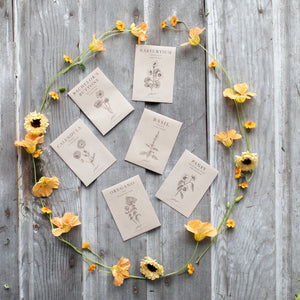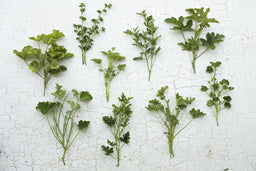Dill ‘Bouquet’
Anethum graveolens
Description
An early-maturing dill variety that produces tall stems loaded with large, chartreuse umbels. This plant is super versatile and makes a wonderful addition to summer bouquets. It’s fragrant, easy to grow, and also edible.
Details
Height: 28 to 36 in
Site: full sun
Days to maturity: 85 to 100 days
Plant spacing: 6 in
Pinch: not necessary
Seed Sowing & Growing Notes
Start seed indoors in trays 4 weeks before last frost; gently transplant out after all danger of frost has passed. Dill can also be direct-seeded into the garden once all danger of frost has passed. Provide support so stems don’t topple. For an extended harvest, sow two to three successions.
Harvesting/Vase Life
Details
Description
An early-maturing dill variety that produces tall stems loaded with large, chartreuse umbels. This plant is super versatile and makes a wonderful addition to summer bouquets. It’s fragrant, easy to grow, and also edible.
Details
Height: 28 to 36 in
Site: full sun
Days to maturity: 85 to 100 days
Plant spacing: 6 in
Pinch: not necessary
Seed Sowing & Growing Notes
Start seed indoors in trays 4 weeks before last frost; gently transplant out after all danger of frost has passed. Dill can also be direct-seeded into the garden once all danger of frost has passed. Provide support so stems don’t topple. For an extended harvest, sow two to three successions.
Harvesting/Vase Life
Sources
How to Grow

Winter Mini Course: Seed-Starting 101
Learn how to start flowers from seed in this three-part video series
In this free video series, you’ll learn everything you need to know to successfully start flowers from seed, including all of the necessary supplies, step-by-step instructions, special tips and tricks, and how to create a simple indoor seed-starting area.















